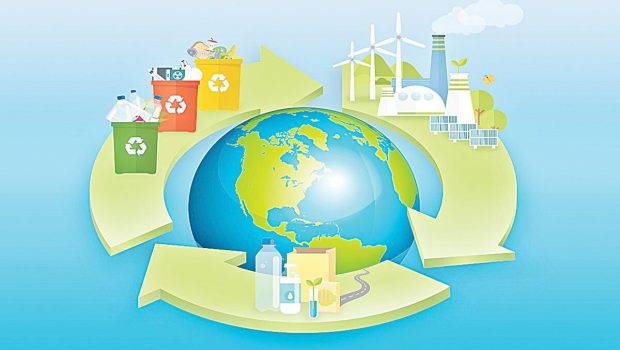Leveraging technology key to achieve circular economy
The circular economy doesn't discard, it is driven towards the optimal utilization of a resource and the reduction of waste to a minimum. As a model fundamentally premised upon sharing, leasing, reusing, repairing, refurbishing and recycling, it is a shift towards sustainability the world could certainly make the most of. Unlike the conventional linear economy that creates, consumes and then throws away, a circular economy comes with the promises of environmental benefits, boosting growth and greater choices in terms of products with a longer life cycle. With this shift clearly appearing as a worthy manoeuvre, it is necessary to think of the tools needed to make this paradigmatic change. The answer, quite simply, lies in what has revolutionized our present: technology.
As per Mapfre, in the respect of establishing a circular economy, work must be done on two fronts: first, there is social awareness, the main stumbling block of which will be changing the mentality of millions of consumers around the world, especially in countries with higher economic levels; and second, in achieving the objectives set, as there are many steps to climb from the 'plan' to its 'implementation.'
For both challenges, technology is the main tool that must be used, as it is only through the most innovative advances that we will be able to reach the most people. More importantly, technology will lower the costs of procedures essential to the circular economy model, such as recycling.
The Indian contextprovides corroboration to the aforementioned claims. As Rajeev Mittal, Managing Director of Autodesk for India and SAARC Nations notes in a report by Business Today, Bangalore International Airport's usage of building information modelling enabled the team to make more informed decisions using data, resulting in increased construction efficiency and reduced cost. Fewer mistakes also meant low materials wastage and less negative impact on the environment. Similarly, programmes promoting reusing and recycling have been able to reach large numbers of people through the digital medium.
While we can be in unanimous agreement over the relevance of technology for achieving a circular economy, it is time to step up our game and accelerate the necessary shift. To this end, a more strategic and far-sighted approach shall be of great utility. Conceptually, we need to ask why despite years of emphasis on recycling, reusing and eco-friendly practices, a circular economy still remains something to be achieved. The answer lies in the fact that we have not made holistic changes and the circular economy is yet to make economic sense on the level of practical application. This is where new technology needs to be leveraged.
Javier Garcia Martinez, member of the World Economic Forum remarks that emerging technologies are critical in enabling disruptive close production cycles. For example, why are we still dependent on crude oil, a linear process that starts by drilling and ends by increasing our CO2 levels? Because, alternative circular processes do not make economic sense and it is here where disruptive technologies can play a key enabling role. For example, producing clean abundant hydrogen by splitting water using solar light can be used as a fuel. New technologies including grassroots innovation efforts that achieve these favourable disruptions have to be promoted, funded and adopted across the board.
Similarly, any attempt towards a revolution in the favour of circularity shall need widespread collection and processing of data, which is arguably possible only using digital technology today. At the same time, consumers must also be involved in a culture of circularity where technology can be instrumental. For example, as Greenbiz reports, Tuna brand Anova created an app based on blockchain technology that allows consumers to use their mobile device to scan a QR code on a package of tuna fish for instant information about the fish's journey to the point of sale as well as insights to verify authenticity, freshness, safety, fair trade fishing certification, and sustainability.
The app's blockchain traceability system gives consumers confidence in understanding where a particular fish was caught, and then ties associated attributes, such as a day in the life of that fisherman, with that fish to tell a more complete product story to customers.
The circular economy, if accomplished, shall leave no space for waste and leave no resource underutilized, ushering in an unparalleled era of sustainability and economic growth. Technology is the right companion to trust in this mission, deft deployments of which can transform our economy for the best.
(The author is Chief Impact Officer at Recykal Foundation)








Gloss